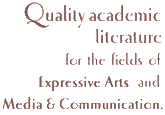Christopher Fynsk
Lascaux and the Question of Origins
The tradition of commentary on the figures painted on the walls at Lascaux is haunted throughout by the question of provenance and destination: were the creators of these figures our first forebears (in a sense that is as much aesthetic and moral as it is genetic), and can we therefore say that the enigmatic insistence of their beauty is in some way for us? Do we look there upon our origins?
Contemporary research in anthropology and paleontology has brought many of the problematic assumptions lurking in these questions into view1. It has even furnished some answers by dismantling the thesis that modern Homo sapiens emerged at a site a few hours from Paris. But the critique of the ideologies at work in the question of origins has not quite eliminated it, at least insofar as we confront the force of those stunning figures. The enigma of Lascaux (taking this name as a kind of metonym for a vast range—in space and time—of painted figures on cavern walls in Western Europe) persists. What in us—our thought, our affect, perhaps our “humanity”—is addressed by these decorated caverns, and how can we understand the address?
In the following pages, I propose to follow a series of responses to these questions, all of which share the thesis that something happened at Lascaux that is linked to the emergence of artistic forms of an originary character. I will not seek to resolve the enigma—indeed, I could best describe my purpose as keeping it alive in the face of a growing tendency (sometimes quite justified) to restrict the use of the term �art� for prehistoric artifacts. My work in this area, which is very much in progress, convinces me that the engravings and paintings on the cavern walls require a renewed attention to the question of artistic form. By following closely a series of remarkable studies by Andr� Leroi-Gourhan, Georges Bataille, and Jean-Luc Nancy, I hope to bring forth some of the dimensions of this question of form. I will not attempt to synthesize the contributions of these authors; instead, I will allow the juxtaposition of discussions (three important contributions to the history of writing on Lascaux that attempt speculative statements on the nature of art and belong to a brief tradition of their own) to point to the emergence of the problematic of art and origins.
1. The Contributions of Andr� Leroi-Gourhan
Leroi-Gourhan�s exciting masterwork of paleontology, Gesture and Speech2 is a most appropriate starting point, both by reason of its influential declarations concerning the nature and function of prehistoric art, and for the speculative assumptions concerning the origins of that art (not all of which rest so easily with the first declarations). It has also been the object of a rather lengthy response from Bernard Stiegler on the topic of its appeal to what Steigler understands as the positing of a spiritual (�second�) origin for humanity3.
This critical response (influential in its own right for its arguments concerning the nature of technicity) brings forth quite sharply some of the key questions I believe must be addressed here. In Stiegler�s view, Leroi-Gourhan�s version of the �human revolution� hypothesis, his assertion that the period of symbolic production to which Lascaux belongs is enabled by a new evolutionary development in humanity (a cortical development proper to humanity today), contradicts his description of the emergence of human technology in the million or so years preceding this last stage. For Stiegler, the technical capacities in evidence in the Zinjanthropian period already bear in them the opening of possibility that is required for the artistic productions of the Neanderthal hominids and the species that subsequently gentrified Europe. While he acknowledges differential �thresholds,� of a sort, the stages of evolution, in his view, are to be read as differential articulations of �pro-grammes� (the reference here is to the Derridean notion of the trace) that disallow not only any strict delineation between animal and human at the beginnings of human (pre-)history, but also any determination of something like a �spiritual origin� for moral humanity in the period to which the cave paintings belong. In a heady state of deconstructive triumphalism, Stiegler declares that Leroi-Gourhan�s account of origins quite surpasses Jean-Jacques Rousseau�s in naivet�. He proposes, on the ruins of Leroi-Gourhan�s arguments, a radically new account of the �epiphylogenesis� of technics.
Now, were it not for the obvious facts that Stiegler a) turns arguments against Leroi-Gourhan that appear to correspond to the spirit (and often the letter) of Leroi-Gourhan�s own presentation (offering little more at most points than a Derridean clarification), b) reads Leroi-Gourhan�s arguments as ungenerously as possible and frequently gives a misleading account of them by hardening and even creating oppositions, c) makes little more progress than Leroi-Gourhan through the aporias he reveals and introduces numerous conceptual problems of his own (how do we think those differential thresholds, and why introduce a notion of �mirroring� to describe the relation between cortical stage and technical realization?), and d) makes no significant mention of art in this long critique, we might be convinced by Stiegler to drop Gesture and Speech altogether…
1 Sally McBrearty and Alison S. Brooks offer powerful evidence against the �human revolution� hypothesis (the assertion that modern human behavior emerged suddenly in Europe approximately 40-50 thousand years ago) in their essay, �The revolution that wasn�t: a new interpretation of the origin of modern human behavior� (in the Journal of Human Evolution], Vol. 35, No. 5, Nov. 2000, 453-563).
2 Leroi-Gourhan, Andr�, Gesture and Speech, trans. Anna Bostock Berger(Cambridge: MIT Press, 1993). I will focus on the latter volume by reason of some of the speculative steps taken there by Leroi-Gourhan. The reader might also consult Leroi-Gourhan�s Introduction a l�art pari�tal pal�olitique (Milan: Editoriale Jaca Book, 1984) for a lengthy treatment of the figural production at Lascaux.
3 Stiegler, Bernard, Technics and Time, 1: The Fault of Epimetheus, trans. Richard Beardsworth and George Collins (Stanford U. Press: Stanford, 1998).
Read the rest of this article! POIESIS V can be yours for $29.95 Cdn or $22.95 US, plus shipping. Click here to order. Back issues of POIESIS are also available.
order details ...

